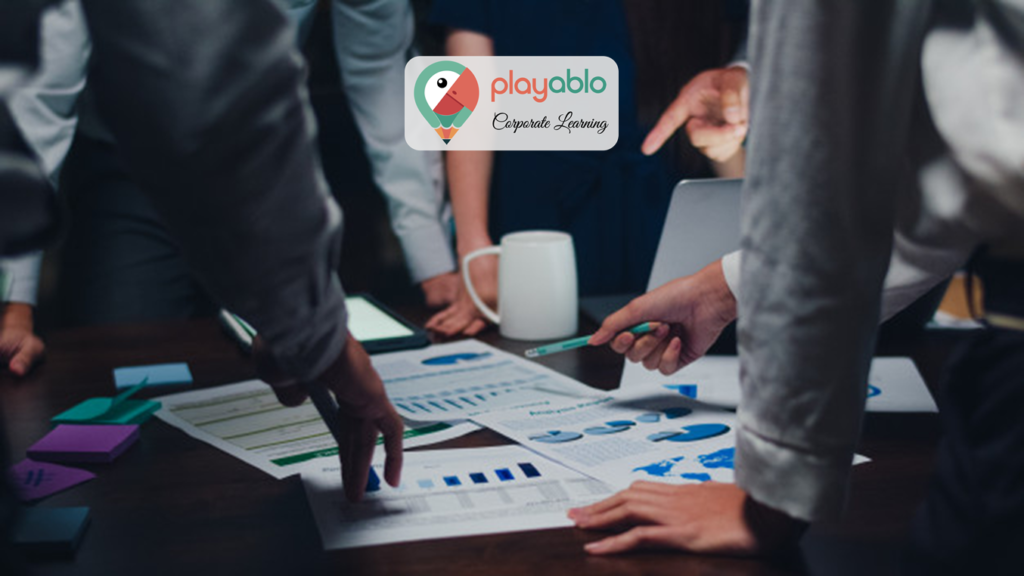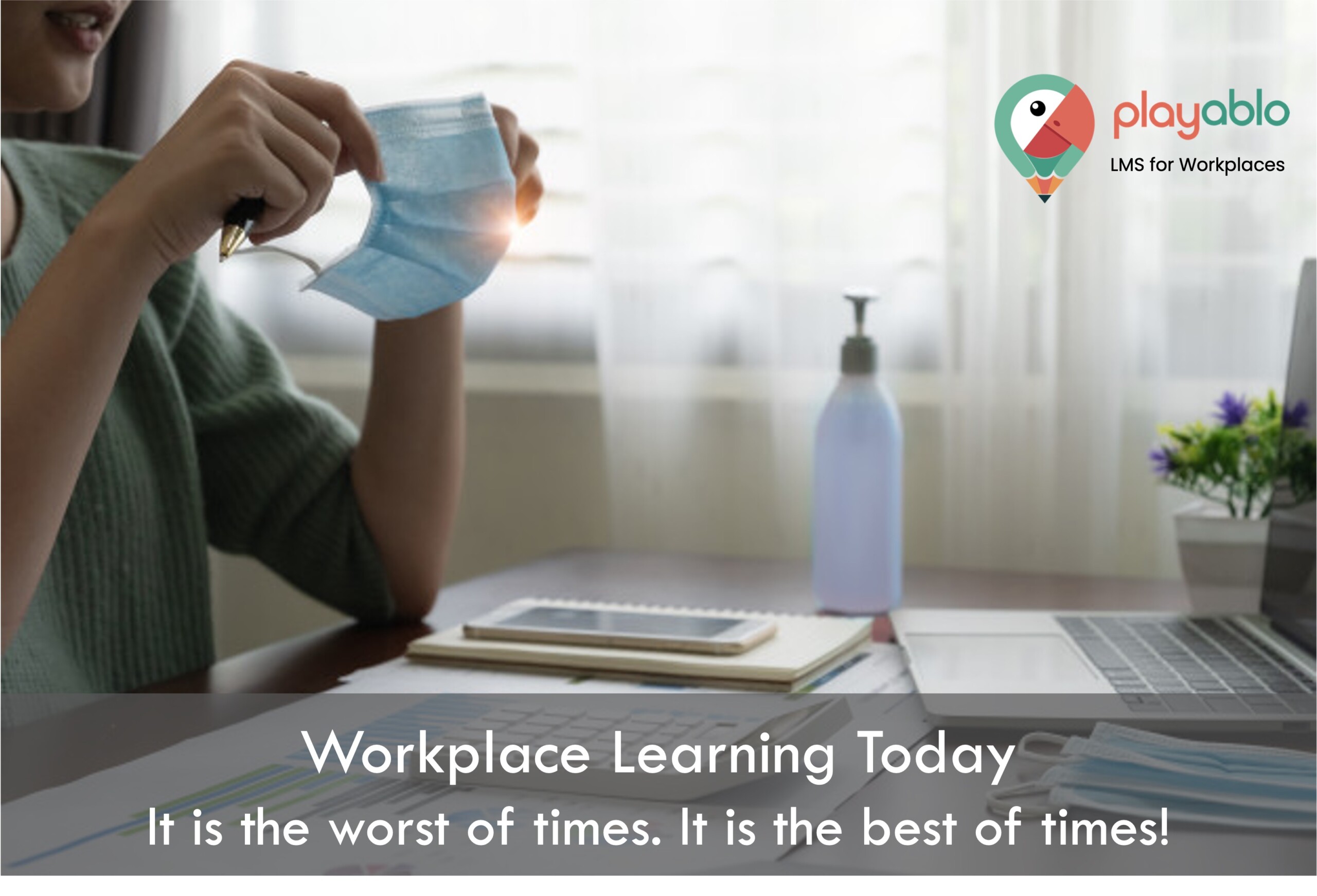“As businesses around the world postpone and cancel in-person meetings in response to the novel coronavirus (or SARS-CoV-2), which causes the COVID-19 disease, workplace learning is emerging as one of the earliest and hardest-hit business activities. Based on our observations as of early March, roughly one-half of in-person programs through June 30, 2020, have been postponed or cancelled in North America; in parts of Asia and Europe, the figure is closer to 100 per cent” — McKinsey.
Why? Well, the answer is simple. With social distancing protocols becoming the norm, Instructor-Led Training (ILT) has become a thing of the past. Travelling restrictions mean that employees cannot go from one venue to another to attend in-person and offline classroom training sessions. Yes, the pandemic has wholly shattered the traditional approach to traditional workplace learning. But as it’s rightly known, every cloud has a silver lining. Do you recall the quote from A Tale of Two Cities by Charles Dickens? “It was the best of times. It was the best of times”.
Due to the pandemic, companies are changing their products, solutions, SOPs, and working models. However, unless the employees get trained on the changes, it will be increasingly difficult to adapt to the new normal. Unless the staff is aware and entirely onboard with the changes (via solid training), the companies will struggle. So it is a double whammy.
Table of Contents
So, What’s the Way Out?

First things first, businesses can’t afford to put capability building on hold. The efforts can be either on reskilling at the business-unit level or a company-wide aspirational transformation. Either way, organisations cannot press the pause button on vital workplace learning — although they adopt an employee-safety approach first.
To enable and deliver value-added training, learning leaders have several options to create learning programs and establish and expand virtual live learning. Digital and virtual learning programs had already started gathering momentum before COVID-19 struck. There is a rapid increase in digital learning, considering the learning habits of the modern workforce.
Read More: 7 Millennials Learning Habits in Our Workforce
Apart from tactical steps, L&D managers have the option to take strategic measures, such as exploring alternative digital learning strategies, which adhere to social distancing protocols. These measures will lead to more robust learning capabilities that can deliver a positive long-term outcome. Hence, today, let us explore how we can make the best of this sobering period in workplace learning.
Workplace Learning | It is the Worst of Times, It is the Best of Times!
The global pandemic offers an opportunity for the traditional L&D and HR managers to adopt what global visionary organisations have been investing in for over a decade now — digital learning in the corporate workplace. SaaS-based LMS being their best bet. This strategic move will:
Quickly get their workforce up to speed with the desperately needed training

In the modern era, time is a constraint. We cannot spend months on launching and deploying a Learning Management System. A SaaS-based LMS like PlayAblo is quick to install since it ditches lengthy time frames to launch online courses and corporate learning. Again, a SaaS-based LMS does not require you to install or build out from scratch. Why? The whole infrastructure is already in place. Therefore, if you need a quick deployment time, you can go for a Cloud-based solution, which translates to savings in resources and money.
Save time
Lengthy classroom training sessions seem to have no end. But eLearning courses are not time or place-bound. Learners do not have to sit in one place to complete the courses. Additionally, they do not need to spend precious hours away from their work stations to attend training sessions. eLearning allows employees to choose flexibility and improves their performance. Additionally, learners can learn at their own pace, rather than moving with the pace of the classroom. Without travel, there is no time wastage in travelling to and fro from venues. There are almost zero chances of tangential discussions that sometimes derail classroom sessions.
Platforms like PlayAblo have the option to reuse old content. You can repurpose the existing training material to suit the needs of the current training. Repurposing saves a lot of time for organisations as they can roll out training programs quickly. With modern authoring tools available in the market, content revamping is exceptionally effortless. Finally, methodologies like microlearning and mobile-optimised training deliver learning in chunks, saving time for the busy learner.
Ad: PlayAblo’s Enterprise-Grade Micro-Learning platform is for the modern corporate learner. Moreover, micro-Learning, along with assessments and gamification features, ensures learning outcome measurement along with sustained engagement.
Find out more and request a custom demo!
Read More: Your Go-to Guide to Convert PPT to Mobile Learning
Save costs and efforts
Several organisations continue to be sceptical about the high development costs involved in setting up eLearning modules. However, this short-term expense far outweighs the long-term benefits. Traditional instructor-led training uses up vast chunks of the training budget in the long run.
eLearning reduces overall training times, translating into increased productivity and profitability. In the conventional employee training model, you will need to take care of your learners’ travel and accommodation, meals, venue rents, and printed learning materials. Not to mention, you also have classroom maintenance costs and salaries for instructors. Updating learning materials consumes not only money but also time and resources.
Incorporating eLearning in the corporate learning process minimises the total development cost by doing away with all of the steps mentioned earlier. Since everything is online, you avoid the expenses involved in one-on-one facilitation.
Uniform training with complete tracking

When you track employee training progress, you have a clear synopsis of your learners’ progress along the learning curve. The correct numbers will give you a bird’s eye view of where learners are getting stuck in their learning journey and which training materials are ineffective or obsolete.
Again, it also explains why trainees are dropping out at a specific phase of the training. Is the course too dull? Is the engagement quotient low? PlayAblo gives access to this data and allows you to improvise your training programs and enhance the learning experience — thereby creating a rich learning culture in your company. You can also up the interest factor by adding engaging content — complete with new ideas, multi-media like video clips and audio, or gamified elements.
Conclusion
Across the globe, organisations are using digital learning to increase collaboration among teams working either remotely or across different time zones. Online corporate learning allows trainees to take courses together and collaborate in virtual formats. These are the reasons why you should place particular emphasis on digital learning as the number of people working remotely because of COVID-19 increases.
Ad: PlayAblo’s Enterprise-Grade Micro-Learning platform is for the modern corporate learner. Moreover, micro-Learning, along with assessments and gamification features, ensures learning outcome measurement along with sustained engagement.
Find out more and request a custom demo!







Comments are closed, but trackbacks and pingbacks are open.